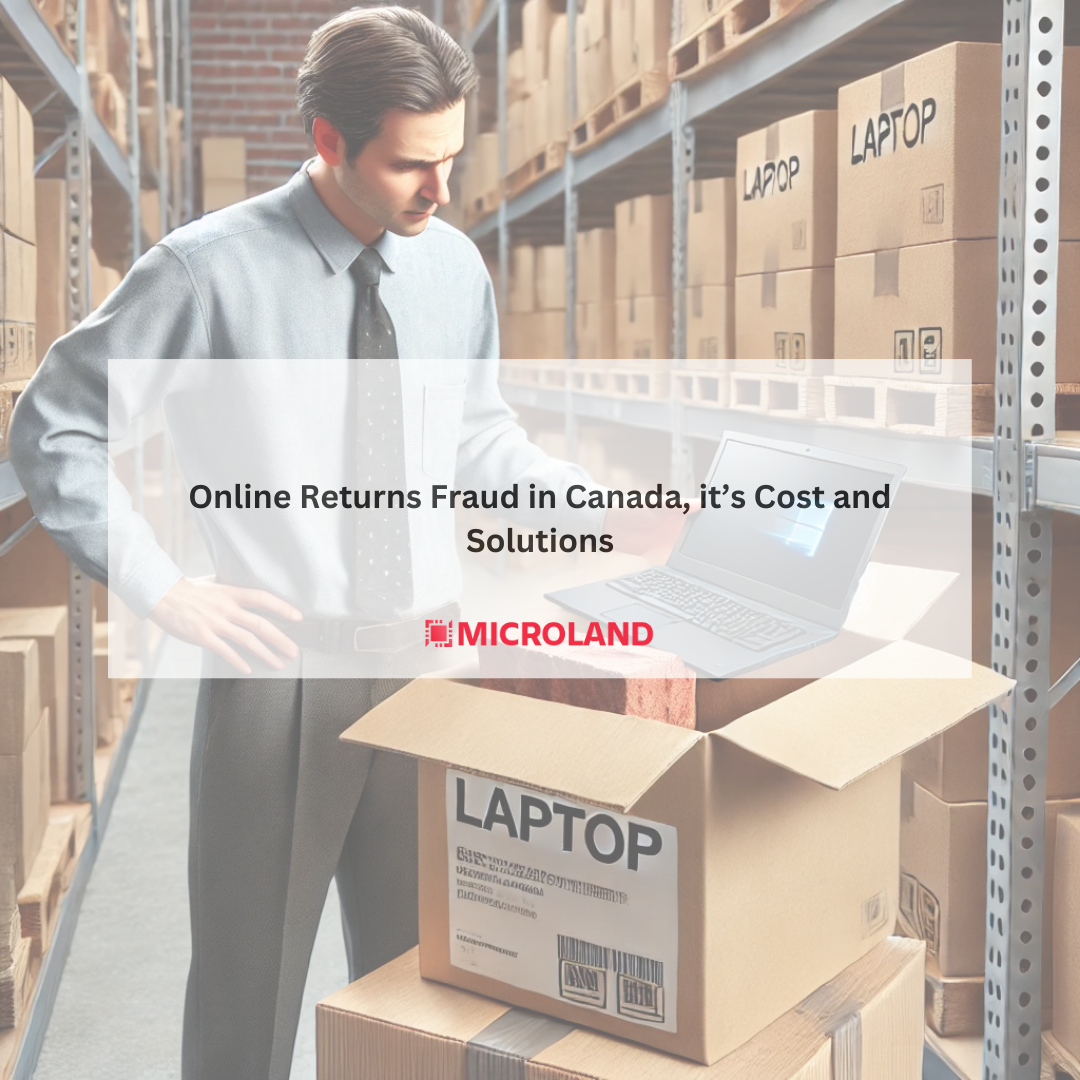Blog
Online Returns Fraud in Canada, it’s Cost and Solutions

A recent Wall Street Journal article, highlights a growing threat to retailers: online returns fraud. Criminals are exploiting e-commerce return policies on a massive scale, using platforms like Telegram to coordinate schemes that cost businesses billions of dollars. Retailers in Canada are not immune to this issue, as the rise in online shopping has opened the door to similar fraudulent activity.
How Returns Fraud Works
Returns fraud occurs when a customer requests a refund without actually returning the item. Fraudsters may send back counterfeit goods, used merchandise, or even an empty box. In some cases, criminals manipulate return shipping labels to falsely indicate that the item has been returned, prompting a refund before retailers realize that the actual merchandise is missing.
Telegram and other anonymous platforms have enabled organized groups to share tips on how to exploit return policies. These groups even offer “refunding services,” which promise refunds without returns, in exchange for a portion of the refund. Retailers that offer generous return policies are particularly vulnerable, as scammers can easily manipulate the system without ever interacting face-to-face with store employees.
The Cost to Retailers
In the U.S., fraudulent returns cost retailers more than $100 billion in 2023. While exact figures are harder to come by in Canada, local retailers face similar challenges. The Retail Council of Canada reported that returns fraud increased by 22% between 2020 and 2022. The rise of e-commerce during the pandemic played a significant role in this surge, as more customers became accustomed to ordering multiple items online and returning unwanted products.
For Canadian retailers, the financial impact is severe. Dealing with fraudulent returns drains resources, increases operational costs, and results in lost inventory that is either resold at a loss or written off entirely.
Fighting Back Against Fraud
To combat returns fraud, retailers need to adopt more stringent measures. Here are a few strategies businesses can implement:
- Use fraud detection technology: Advanced software can help flag suspicious return requests based on customer history, shipping details, and return patterns.
- Strengthen return policies: Shortening return windows or charging restocking fees may deter fraudsters. Retailers can also require additional verification steps, such as photo evidence of damaged items.
- Improve internal communication: Fraudsters often exploit gaps between sales, customer service, and warehouse teams. By improving communication between these departments, retailers can detect fraud earlier in the process.
- Monitor online fraud communities: Staying informed about emerging fraud schemes shared on platforms like Telegram can help retailers adjust their defenses.
How Microland Can Help
At Microland, we specialize in logistics, returns management, and fraud prevention. Our comprehensive services can help your business track returns, verify the authenticity of products, and minimize the risk of fraud. By working with us, you can protect your bottom line and focus on growing your business while we handle the complexities of returns management.
Protect your business from returns fraud—partner with Microland to ensure secure and efficient returns processes.
Are you looking to establish a respected service presence in Canada? Contact Us for more info
